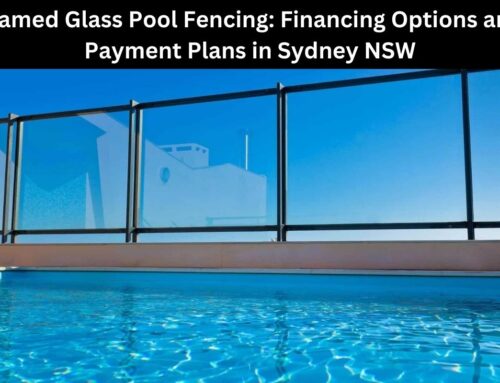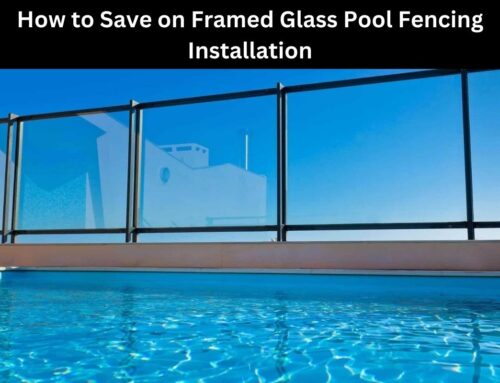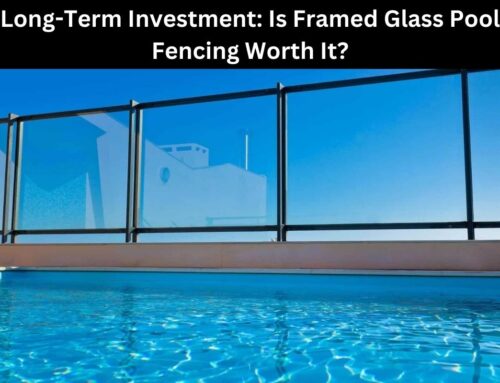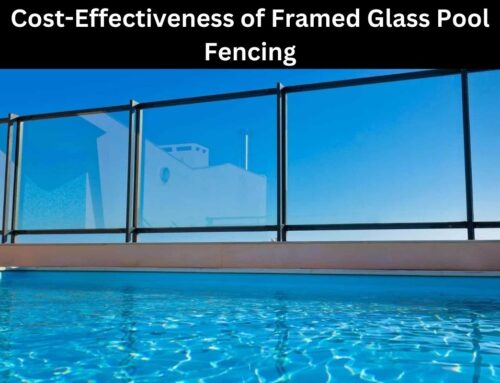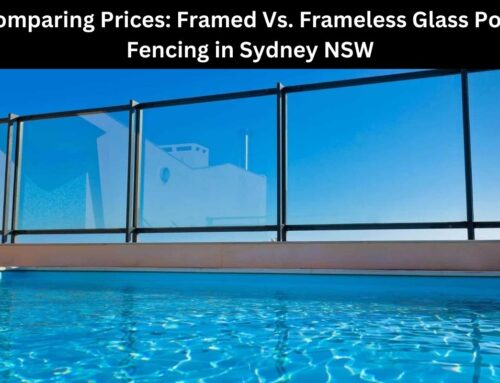Table of Contents
Imagine a shimmering oasis in the midst of a barren desert, reflecting the sunlight and mirroring the sky above. Like a delicate spider web, framed glass pool fencing encloses this oasis, providing a barrier between the water’s embrace and the outside world. While this architectural feature adds elegance and functionality to poolside areas, its environmental impact remains an important consideration.
This article aims to explore the environmental implications of framed glass pool fencing, shedding light on the raw material extraction and manufacturing processes, carbon footprint, water consumption, waste generation, and alternative eco-friendly options. By examining these aspects through an objective, research-based lens, we can gain a clearer understanding of the environmental consequences associated with this popular poolside addition.
Armed with this knowledge, homeowners, designers, and manufacturers will be better equipped to make informed decisions about the sustainability of framed glass pool fencing and seek alternative solutions that align with their environmental values.
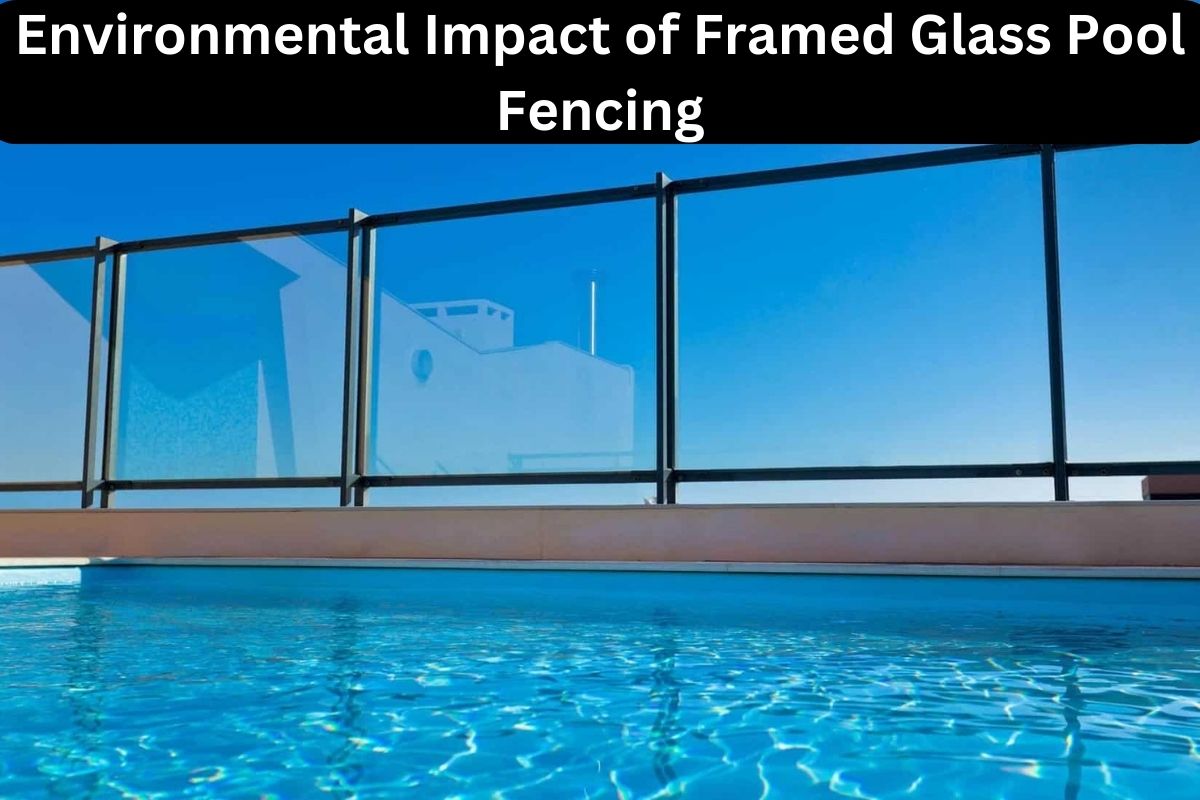
Key Takeaways
- Raw material extraction and fabrication of framed glass pool fencing contribute to environmental impact.
- Advancements in glass production technology have reduced energy consumption and greenhouse gas emissions.
- Transportation, installation, maintenance, and disposal of glass panels increase the carbon footprint.
- Water usage in production and installation can contribute to resource depletion and harm ecosystems.
Raw Material Extraction and Manufacturing Processes
Raw material extraction and manufacturing processes involved in the production of framed glass pool fencing entail the procurement of raw materials such as sand, soda ash, limestone, and recycled glass. These materials are then subjected to high-temperature fusion to form glass sheets.
The next step involves the fabrication of metal frames through various machining techniques.
Sustainable sourcing of raw materials is key to minimizing the environmental impact of the production process. This involves obtaining materials from responsibly managed sources that prioritize environmental conservation and social welfare. Additionally, efforts are made to use recycled glass in the manufacturing process, which reduces the demand for virgin materials and decreases waste generation.
In terms of energy efficiency, advancements in glass production technology have allowed for significant reductions in energy consumption. Energy-efficient manufacturing processes, such as the use of electric furnaces and heat recovery systems, help minimize the overall energy requirements of glass production. This not only reduces greenhouse gas emissions but also contributes to cost savings for manufacturers.
By adopting sustainable sourcing practices and implementing energy-efficient production techniques, the environmental impact of framed glass pool fencing manufacturing can be significantly reduced. However, it is important to further analyze the carbon footprint associated with the production and transportation of these materials to gain a comprehensive understanding of their overall environmental impact.
Carbon Footprint
Manufacturing and installing framed glass pool fencing contributes to greenhouse gas emissions throughout its life cycle, primarily during the production of glass panels, transportation, and installation processes. The carbon footprint of framed glass pool fencing is influenced by various factors, including the energy consumption and greenhouse gas emissions associated with each stage.
Firstly, the production of glass panels requires significant amounts of energy, primarily from fossil fuel sources. The extraction of raw materials, such as silica sand and soda ash, and the subsequent glass manufacturing process contribute to greenhouse gas emissions. Additionally, the transportation of glass panels from manufacturing facilities to installation sites further increases the carbon footprint.
Furthermore, the installation process itself involves energy consumption, particularly during the construction of the frame and the fixing of glass panels. The use of machinery, such as cranes and heavy equipment, contributes to greenhouse gas emissions through fuel combustion.
To further understand the environmental impact of framed glass pool fencing, it is essential to consider the indirect emissions associated with its maintenance and disposal. Regular cleaning and maintenance of the glass panels may require the use of chemical cleaners, which can have additional carbon emissions. Similarly, the disposal of glass panels at the end of their lifespan contributes to the carbon footprint.
Transitioning to the subsequent section about water consumption, it is important to analyze the environmental implications of framed glass pool fencing beyond its carbon footprint.
Water Consumption
Water usage in the production and installation of framed glass pool fencing has substantial implications for resource depletion and conservation. The manufacturing process of glass involves the use of large quantities of water, primarily for cooling and cleaning purposes. Additionally, water is required for the production of the aluminum frames used in these fences. The extraction, treatment, and transportation of raw materials for glass and aluminum production further contribute to water consumption.
The impact of water consumption extends beyond the production phase. During installation, water is necessary for mixing concrete or other materials used to secure the glass panels in place. This additional water usage, although temporary, adds to the overall water footprint of framed glass pool fencing.
Moreover, the excessive water consumption associated with these fences can have adverse effects on local ecosystems. Water scarcity is a growing concern in many regions, and the demand for water-intensive products like framed glass pool fencing exacerbates this issue. The extraction of water from natural sources can disrupt aquatic habitats and reduce water availability for other purposes, such as agriculture or drinking water supply.
The production and installation of framed glass pool fencing involve significant water consumption, which has implications for both resource depletion and water conservation. The impact on local ecosystems is particularly concerning, considering the growing water scarcity in many regions. This highlights the need for more sustainable alternatives in the pool fencing industry. Moving forward, it is crucial to consider the environmental consequences, including water usage, when making decisions about fencing options.
This leads us to the next section, waste generation, where we will explore the disposal and recycling aspects of framed glass pool fencing.
Waste Generation
The disposal and recycling of framed glass pool fencing present challenges in managing the waste generated by this product.
Glass is a recyclable material, and recycling initiatives have been implemented to reduce the amount of glass waste that ends up in landfills. However, the recycling process for glass can be complex and costly, which has led to a significant amount of glass still being disposed of as landfill waste. According to research, only a fraction of the glass used in framed glass pool fencing is currently being recycled.
One of the main challenges in recycling framed glass pool fencing is the removal of any additional components attached to the glass, such as metal frames and fittings. These components often need to be separated from the glass before it can be recycled, which requires additional time, labor, and resources. As a result, many glass pool fencing components are still being discarded in landfills, contributing to the overall waste generated by this product.
While there are recycling initiatives in place for framed glass pool fencing, the amount of glass being recycled is still relatively low. The complex and costly recycling process, along with the need to separate additional components, hinders the efficient recycling of this type of fencing.
As we move forward, it is crucial to explore alternative eco-friendly options for pool fencing to reduce waste generation and minimize the environmental impact of this product.
Alternative Eco-Friendly Options
This discussion will focus on alternative eco-friendly options for pool fencing, exploring sustainable materials that can be used instead of traditional framed glass.
These materials are designed to minimize the environmental impact associated with waste generation and production processes.
Additionally, innovative designs and technologies will be examined, highlighting their potential to reduce resource consumption and improve overall sustainability in the construction and maintenance of pool fences.
Sustainable materials for pool fencing
One potential option for sustainable materials in pool fencing is bamboo, which can provide a visually appealing and durable alternative to traditional materials. Bamboo is a renewable resource that grows quickly and requires minimal energy input for cultivation. Its natural strength and resistance to moisture make it an ideal material for pool fencing, as it can withstand the outdoor elements and maintain its structural integrity over time. Additionally, bamboo has a high aesthetic appeal, with its natural grain patterns and warm tones adding a touch of elegance to any pool area. By utilizing sustainable materials such as bamboo, pool owners can not only reduce their environmental impact but also enhance the overall beauty of their outdoor space. Transitioning into the subsequent section, innovative designs and technologies can further minimize the environmental impact of pool fencing.
Innovative designs and technologies to minimize environmental impact
Incorporating innovative designs and technologies into the realm of pool fencing can contribute to the overall reduction of ecological footprints. Green building practices can be implemented in the construction of glass pool fences to minimize their environmental impact. One such practice is the use of sustainable materials like recycled glass or low-emission glass.
Additionally, the integration of renewable energy sources such as solar panels can help power the pool fence lighting or any other electrical components. Innovations in design can also play a crucial role in reducing the environmental footprint of glass pool fencing. For example, the use of frameless or semi-frameless designs can minimize the amount of material needed, resulting in less waste.
Incorporating these green building practices and innovative technologies can help create more sustainable and environmentally-friendly pool fencing solutions.
- Use of sustainable materials like recycled glass or low-emission glass
- Integration of renewable energy sources such as solar panels
- Frameless or semi-frameless designs to minimize material waste
- Incorporation of energy-efficient lighting systems
- Implementation of water-saving features
Embrace Elegance and Safety with Majestic Glass
Embrace the perfect balance of elegance and safety with Majestic Glass’s leading framed glass pool fencing services in Sydney. Our framed options bring together modern design and durability solutions, providing a stylish yet secure solution for your pool area. Using only the best quality glass, we ensure durability and striking aesthetics. Head to our main services page for a more detailed view of our commitment to quality, our comprehensive processes, and the unique advantages of a Majestic Glass framed pool fence.
Frequently Asked Questions on Environmental Impact of Framed Glass Pool Fencing
Are there any health risks associated with using framed glass pool fencing?
There is no evidence of health risks associated with using framed glass pool fencing. On the contrary, it offers health benefits by providing a clear view of the pool area. Maintenance tips include regular cleaning and inspection for any cracks or damage.
How does framed glass pool fencing compare to other types of fencing in terms of cost?
In terms of cost, framed glass pool fencing may have higher upfront expenses compared to other types of fencing. However, it offers advantages such as low maintenance requirements, long-term durability, and reliability, which can offset the initial investment.
Can framed glass pool fencing be recycled at the end of its life?
What recycling options are available for framed glass pool fencing? It is important to consider the environmental impact of this type of fencing and explore the potential for recycling at the end of its life.
What is the average lifespan of framed glass pool fencing?
The average lifespan of framed glass pool fencing is typically around 20-30 years. This may vary depending on factors such as maintenance requirements, exposure to harsh weather conditions, and the quality of materials used.
Are there any regulations or building codes that govern the installation of framed glass pool fencing?
There are regulations and building codes that govern the installation of framed glass pool fencing. These guidelines ensure the safety and structural integrity of the fencing, addressing issues such as height requirements, gate specifications, and glass thickness.
Conclusion
The environmental impact of framed glass pool fencing has been examined from various perspectives.
Through an analysis of raw material extraction and manufacturing processes, it is evident that these practices contribute to carbon emissions, water consumption, and waste generation.
Alternative eco-friendly options should be considered to mitigate these detrimental effects.
In conclusion, the study emphasizes the need for sustainable choices in pool fencing, as every cloud has a silver lining when it comes to protecting our environment.
Related Articles

